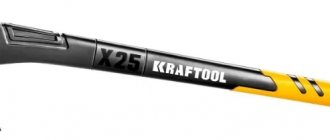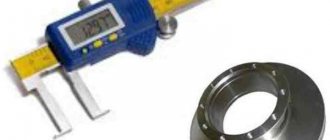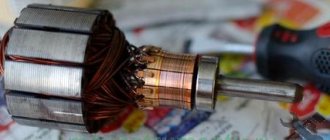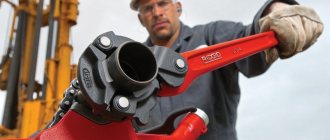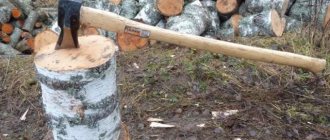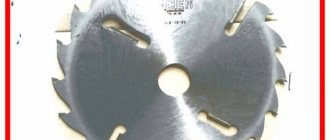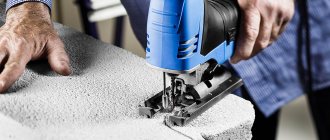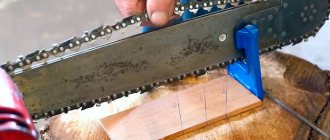The name trowel is German. In Russian, the name of this tool is trowel, although some argue that a trowel becomes a trowel only in the hands of a master. But then a spatula used by a specialist can be called a trowel, a hammer, and even an electric drill.
There are a great many varieties of trowels, and not all are shown in the photograph.
Some of them have pronounced features associated specifically with one purpose or another, and some acquired their configuration solely due to the individual preferences of the owner. We will try to deal with all this with the maximum degree of reliability, still leaving room for the imagination of users of this tool.
Trowel for aerated concrete
Most trowels (with the exception of specific ones, which we will consider below) consist of:
- shoulder blades;
- legs;
- handles.
Obviously, the mason's trowel is the most common type of trowel and the most varied in terms of shapes. This tool is mainly used when doing brickwork. Often, he is, literally and figuratively, tailored to the master’s hand.
And, although the shape of this particular trowel most often has a simple triangular shape, there are more features and options here.
First of all, they are associated with some specific work methods. Namely:
1. To collect mortar in the corners and form a mortar layer, the nose of the mason's trowel is often rounded or cut off.
2. To tap bricks when laying them, often the shank of a wooden or plastic handle has a metal heel that prevents it from breaking.
3. To prevent mortar residues from falling from the blade when tapping, the mason’s trowel has a high leg - 40 - 50 mm.
4. To select excess mortar protruding from the seams, especially when laying bricks that have low smoothness, use a trowel with rounded side edges of the blade, the so-called. American.
5. The blade steel of these trowels should be good, and the ribs should be sharp enough so that they can be used to break off part of the brick.
6. With a stable seam thickness and standard brick sizes, most professional masons prefer, in addition to the shape, to adjust the size of the trowel so that at one time they collect exactly as much mortar as is necessary for laying one brick.
In these cases, the preferred dimensions are: length 160 - 170 mm with width 100 - 110 mm. The cut edges must be sanded so as not to interfere with the easy sliding of the mortar from the blade. It must also be said that most masons prefer to adjust the bend of the leg to suit themselves, thus moving the center of gravity of the tool with the mortar and adjusting the load on the hand. They also change the angle of inclination of the handle to the plane of the blade, following individual preferences.
Such manipulations are carried out with any trowels, except Venetian ones - they have their own modifications.
Concrete trowel
Most of these trowels in their configuration resemble the basic shape of a mason's trowel - triangular, but, as a rule, they are large in size, because are not associated with the need for a clear dosage of material, and the long side edges of the blade are for more productive leveling of the concrete mass along the plane.
Also, trowels used for concrete work have all corners rounded so as not to leave sharp stripes when smoothing the surface.
Also, due to its rather large size, such a trowel is often used for dosing quantities of materials when preparing solutions. The length of their blades often reaches 200 mm and the width 150.
Plastering trowel
This trowel is also large enough to apply a sufficiently large amount of plaster to the wall in one go. It is mainly used when applying cement or lime mortars.
But it has a sharp nose for forming corners (see photo above). In general, the surface of all trowels should be as smooth as possible, ideally polished, for the easiest sliding of the material, but plaster trowels should be especially smooth, due to the specifics of the work - throwing portions of mortar onto the wall.
Often such a trowel, being quite universal, becomes the only one in the home workshop, because nothing prevents you from using it when laying a couple of dozen bricks or concreting several square meters of garden paths.
Finisher's trowels
Perhaps this type contains the largest list of instruments in terms of varieties.
It contains a tool resembling a plaster trowel in shape and size, and tools similar in configuration to a mason's trowel, and spatula trowels, and not at all similar to them, corner and Venetian trowels.
But what distinguishes all metal finishing trowels is the highest degree of surface smoothness, and stainless steel is almost always used as the material. Unless otherwise required for the correct application of a particular type of material.
And this also applies to the application of liquid wallpaper, “bark beetle” type plasters, and some textured varieties of Venetian plasters. But a description of how to work with each of them requires a separate article at a minimum. Often, most of these trowels are also called trowels.
The very name of the Venetian trowel implies its main purpose - applying plaster mixtures based on marble dust and the like, but there are plenty of standard sizes and configurations that differ in the degree of concavity, rounded corners, etc. So the length of such a trowel can vary, but the main dimensions are: 200 x 80 and 240 x 100 mm. Despite their main purpose, such trowels are a fairly universal tool.
And in the hands of an experienced master they can do a lot.
Most finishing trowels from the inexpensive and medium segment still require a little finishing, which consists of processing the edges and corners with “zero” sandpaper.
Features of the spatula
Of course, it is best to apply Venetian plaster to walls using a trowel, but a spatula is also considered a very worthy alternative to this device.
To carry out such facing work, it is necessary to have a steel object that will be relatively small in size. Some people are simply uncomfortable working with a trowel. There are many options when one device can be replaced by another. That’s why you definitely shouldn’t discount the spatula.
When choosing a spatula, you must also follow some rules:
- The angles of the tool should be straight, since this shape is best suited for finishing walls.
- The spatula must be made entirely of metal. It is not recommended to use products made from other materials.
- To apply plaster, you only need to select a narrow tool to make it easier to apply the material to particularly difficult places. It should be borne in mind that to apply such a cladding, it is important to use several spatulas at once to perform some manipulations.
- The tool must fit well in the user’s hands so that the work is as comfortable as possible.
- The spatula used to apply Venetian plaster must be well polished on both sides and also have a fairly flexible blade.
Tools for finishing walls with Venetian plaster need to be selected very carefully, so that the work will be carried out correctly and comfortably, and will also bring the desired result.
If you are a beginner and are not well versed in this matter, then you need to remember that only a true professional can cope with the task using poor material. The chosen trowel must necessarily meet the best requirements that apply to the acquisition of such a tool.
Trowels for aerated concrete and other blocks
Of course, such trowels are used when laying any solid blocks, not just aerated concrete. Therefore, they differ in size and slightly in design, which, however, does not change the essence of the process of applying the solution to the wall.
Obviously, the dimensions of such a trowel-scoop should vary depending on the thickness of the blocks being laid.
How to use such a tool is clearly shown in the video.
For hollow blocks, in order to save installation glue or mortar, it is much more rational to use a trowel called a Portuguese one. In its shape, it resembles the Venetian one, only longer, and the handle has a wide, arched handle.
When applying the mortar to the wall, simultaneously with the downward movement, it is slightly pulled along the wall, forming from the mortar a neat roller extended along the longitudinal edges of the blocks.
How to choose
Trowels and trowels are professional tools for the manufacture of which GOST standards have been developed.
During the selection process, the master must take into account the parameters for a specific type of construction activity. This will improve the quality of work and the safety of its execution.
Where to buy: in specialized stores, this will give you confidence in the quality of the product.
Important selection criteria:
- purpose (special models for laying bricks, for tile grouting, etc.);
- type of planned work (external or internal finishing).
Errors in selection instantly make the trowel unsuitable for use. Even a beginner will feel the catch in the first minutes of using the tool.
An example of the right choice. A steel spatula is standard for plasterers and concrete workers, as it is reliable when working with heavy construction substances. A plastic model with teeth can be chosen for applying tile or wallpaper adhesive. The weight of such an accessory is much less, your hand will not get tired for a long time.
A market review shows that finding a trowel for a certain type of work is not difficult. The assortment is wide, prices are affordable.
Stainless steel trowels with wooden handles command the highest prices. The cost is reduced if the handle is plastic and the steel is ordinary. The most popular models are in the middle price segment; their quality is slightly inferior to well-known branded professional models, they perform the stated tasks, last a long time, and are affordable.
Other types of trowels
Among others, a separate niche is occupied by:
1) tiler's trowels.
They have both a traditional shape and small size, but often with cut corners, and a configuration more reminiscent of a Venetian trowel, but with teeth on both sides for precise dosage of adhesive applied to the tiles.
2) stove trowels. They are also small, like tilers' trowels, but often narrower and with rounded corners for ease of working in tight stove ducts.
3) special trowels. Like the trowel pictured for filling masonry joints.
The mortar is applied to it and with a spatula, or another trowel and a jointer (which is essentially also a trowel), it is pressed into the seams of the masonry. This is especially convenient if you need to make a colored seam and do not want to add dye to the entire masonry mass.
Some craftsmen have their own unique trowels, and if you also have one and would like to share its design with our subscribers, we will be grateful.
We recommend other articles on the topic
Sealant gun - how to use a simple gun at home
Construction rule - how to choose and use tools correctly
Grover's washer: why it was created and what is the effect of its use
High-temperature sealant for stoves and fireplaces - making a choice
Tiler's trowel.
A successful tool should perform several functions simultaneously, like a ladle for gas blocks. The more possibilities, the better the design. An unsuccessful solution is compensated by a set of several tools.
A tiler needs a trowel to:
- Collect the mixture from a bucket. That is, its dimensions should allow you to take a sufficient amount of glue (at least for an average tile).
- Mix the grout in a small container and remove it from there. That is, the edges and end are flat, the corners are rounded, and the width of the blade is no more than 10 cm.
- Clean the walls and bottom of the bucket from glue. That is, the end and side walls are flat or slightly beveled.
- Undermining newly laid tiles. That is, the handle mount is very strong .
- Periodically (during the day) clean the notched trowel and the trowel itself from glue. That is, the end is sharp, flat and durable made of stainless steel. The surface is smooth, without scratches or protrusions for glue to cling to.
All requirements are similar and point to a stove trowel, with the exception of the ability to lift freshly laid tiles. In general, this is true. About attaching the handle separately.
A short excerpt from a video by American tiler Sal DiBlasi gives a complete idea of what a tiler's trowel should be like:
